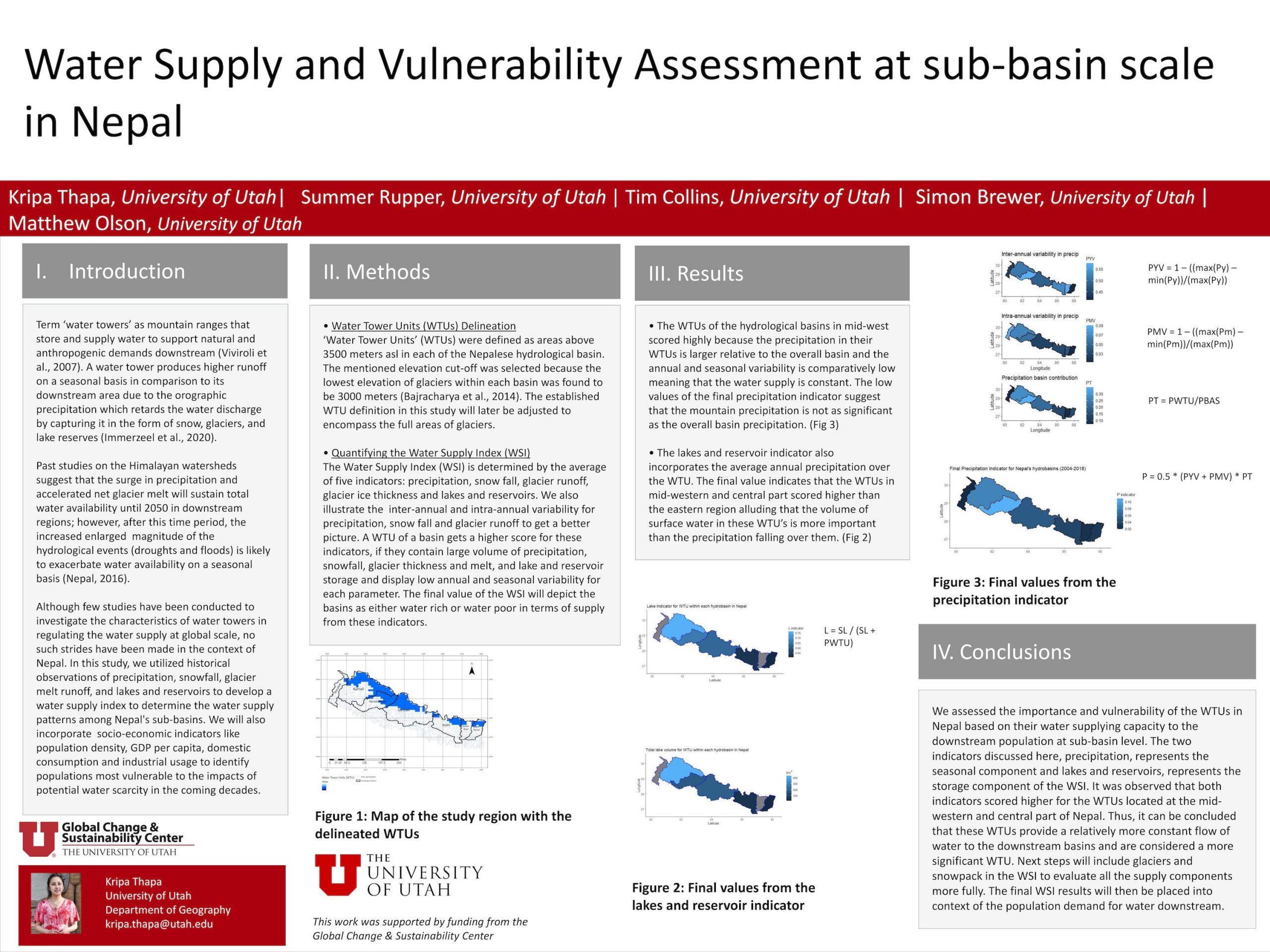Water Supply and Vulnerability Assessment at sub-basin scale in Nepal
-Kripa Thapa, Summer Rupper, Tim Collins, Simon Brewer, Matthew Olson
[bs_collapse id=”collapse_b632-017a”]
[bs_citem title=”Bio” id=”citem_7a0c-d13e” parent=”collapse_b632-017a”]
I am a 2nd-year master’s student from Kathmandu, Nepal, working with Dr. Summer Rupper at the Snow and Ice Lab, Department of Geography. My interests revolve around studying the impacts of climate change and glacier shrinkage on the vulnerable population living downstream in developing countries. In 2020, I worked remotely as a United Nations volunteer, where I helped in drafting grant proposals related to mitigating coastal pollution in Cameroon. During my free time, I like to go hiking, cook food and listen to crime podcasts.
[/bs_citem]
[bs_citem title=”Abstract” id=”citem_b312-1842″ parent=”collapse_b632-017a”]
The central Himalayan mountains play a vital role in ensuring the hydrological flow regime of the major Nepalese rivers, with glacier and snow melt contributing significantly during the dry seasons. Hydrological models predict that enhanced glacier melt due to warming climate in the high elevations will increase the summer river flow in many Nepalese hydro basins through 2050. After this time, continued glacier mass loss and area decrease will result in a vast reduction of glacier runoff and downstream water availability. In this study, we utilized historical observations of precipitation, snowfall, glacier melt runoff, and lakes and reservoirs to develop a water supply index to determine the water supply patterns among Nepal’s sub-basins. Then, we incorporated socio-economic indicators like population density, GDP per capita, domestic consumption and industrial usage to identify populations most vulnerable to the impacts of potential water scarcity in the coming decades.
[/bs_citem]
[bs_citem title=”Narrative” id=”citem_ab2e-2b71″ parent=”collapse_b632-017a”]
Over the past year, I have been advancing towards making progress with my thesis research, which involves conducting a water vulnerability assessment at Nepal’s sub-basin level. I am building a water supply index for each basin and investigating what roles various indicators such as precipitation, glacier runoff, snowmelt, lakes, and reservoirs help determine the water supply for the region. Also, the research incorporates socio-economic variables such as population density and GDP per capita to aid in identifying a region’s vulnerability. The study will elucidate the primary drivers of water vulnerability in Nepal and provide a framework to help combat potential water scarcity that will be of interest to policymakers and researchers in the long run.
[/bs_citem]
[/bs_collapse]

